#detailing services Edinburgh
Link
#Vehicle Detailing Services Edinburgh#detailing services Edinburgh#Expert Car Detailing#Mobile Valeting & Detailing#car detailing services in Edinburgh#car detailing Edinburgh
0 notes
Text
SFX Magazine Issue 368, August 2023
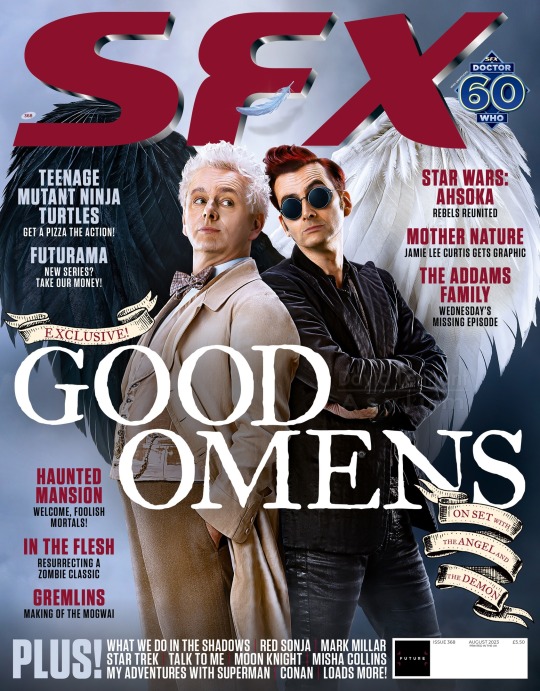




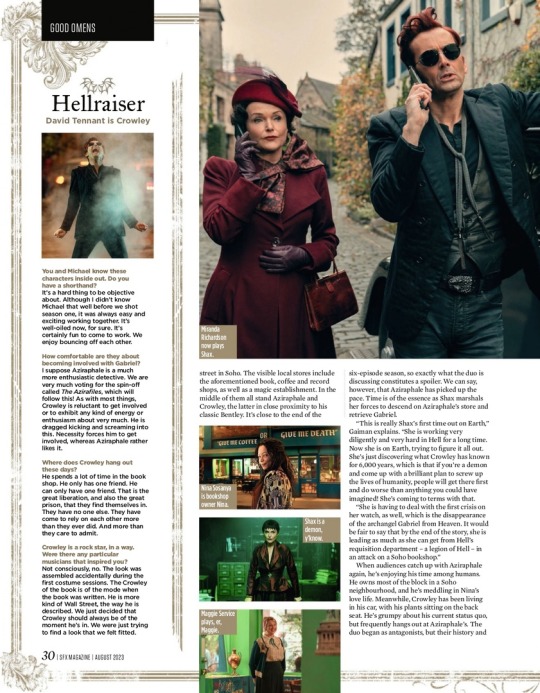

THEY’RE BACK – AND THIS TIME THEY’RE IN ALL-NEW TERRITORY. NEIL GAIMAN TALKS RETURNING FOR SEASON TWO OF GOOD OMENS
THE RASCALLY DEMON Crowley (David Tennant) and the neurotic angel Aziraphale (Michael Sheen) put aside their differences to pull off one doozy of a Hail Mary and prevent an impending Apocalypse in Good Omens’ first season. The task cemented the pair’s unconventional friendship. So what are divine beings, who have fallen out of grace with both Heaven and Hell, to do for an encore?
The answer lies with archangel Gabriel (Jon Hamm), who shows up unannounced on the doorstep of Aziraphale’s London bookshop. Suddenly, Aziraphale and Crowley are caught up in a caper of biblical proportions – but also a more intimate tale.
“It’s a mystery,” showrunner Neil Gaiman tells SFX. “It kicks off a story that doesn’t have giant consequences for the universe, even if it does have consequences for Aziraphale and Crowley. We have a lot of the marvellous Jon Hamm, who is the angel Gabriel and turns up at the beginning stark naked, carrying a cardboard box with no memory of who he is. In the same way, it is about Aziraphale and Crowley having to get involved with humanity in a way that they haven’t before.
“They get dragged in slightly against their will to try to sort out the love life of Aziraphale’s tenant,” he continues. “Her name is Maggie [Maggie Service] and she runs the record shop next to the bookshop. You’ll see the coffee shop over the road, which is Nina’s [Nina Sosanya]. The relationship between Maggie and Nina is one that Crowley and Aziraphale try to fix, and mess up, because they are not good at human relationships, even if they can do miracles.”
Truth be told, Gaiman never originally intended this arc to serve as Good Omens’ second instalment. The TV series was based on Gaiman and Terry Pratchett’s 1990 novel. The two collaborators had partially hashed out the details for a sequel to the fantasy comedy, late one night in a hotel room. This, however, is not it. Gaiman instead plotted a new narrative that could provide the connective tissue between the first season and a theoretical season three, if it happens.
“Because the hypothetical season three exists, there is a story that is there, and I didn’t feel that we could drive straight from season one into that,” Gaiman explains. “I knew what the stakes were. I knew what the parameters were. I also knew that I had David and Michael. I had the angels from plot number one.
I had demons from plot number one. And with anybody that I wanted to bring back, but didn’t have room for right now, I did not have to bring them back as themselves. “I had absolutely nothing for Madame Tracy to do in this plot, but I would be damned if Miranda Richardson wasn’t going to be in this. She is one of my favourite people in the world. She is hilarious and is so good. And I knew I was going to have a new demon replacing Crowley as Hell’s representative in London/ the UK. Miranda’s demon Shax is the best demon you could want.”
It’s late February 2022 and SFX is in Edinburgh for a set visit. A soundstage in Pyramids Studios has been transformed into a street in Soho. The visible local stores include the aforementioned book, coffee and record shops, as well as a magic establishment. In the middle of them all stand Aziraphale and Crowley, the latter in close proximity to his classic Bentley. It’s close to the end of the six-episode season, so exactly what the duo is discussing constitutes a spoiler. We can say, however, that Aziraphale has picked up the pace. Time is of the essence as Shax marshals her forces to descend on Aziraphale’s store and retrieve Gabriel.
“This is really Shax’s first time out on Earth,” Gaiman explains. “She is working very diligently and very hard in Hell for a long time. Now she is on Earth, trying to figure it all out. She’s just discovering what Crowley has known for 6,000 years, which is that if you’re a demon and come up with a brilliant plan to screw up the lives of humanity, people will get there first and do worse than anything you could have imagined! She’s coming to terms with that.
“She is having to deal with the first crisis on her watch, as well, which is the disappearance of the archangel Gabriel from Heaven. It would be fair to say that by the end of the story, she is leading as much as she can get from Hell’s requisition department – a legion of Hell – in an attack on a Soho bookshop.”
When audiences catch up with Aziraphale again, he’s enjoying his time among humans. He owns most of the block in a Soho neighbourhood, and he’s meddling in Nina’s love life. Meanwhile, Crowley has been living in his car, with his plants sitting on the back seat. He’s grumpy about his current status quo, but frequently hangs out at Aziraphale’s. The duo began as antagonists, but their history and blossoming relationship will be fleshed out in flashbacks.
“One of the enormously fun things I came up with is the idea of minisodes,” Gaiman explains. “They are 25-minute-long episodes within the episode. We have three of them over our six episodes. Each of them is like one of those chunks of episode three [in season one]. Whereas the longest one of those was four or five minutes, if that, these are full stories.
“You get to have the story of [put-upon Biblical figure] Job, and you learn Aziraphale and Crowley’s part in the story. Then writer Cat Clarke takes us to Edinburgh in the 1820s for a tale of body-snatching and attempted murder that the boys get involved in,” he adds.
“Finally, Jeremy Dyson and Andy Nyman reunite the League Of Gentlemen in a Nazi-period story that takes place very shortly after the episode in the church. That one was the only one I said had to be there, because I fell in love with our Nazi spies in the church. I kept thinking, ‘What would happen if they essentially came back as zombies, with a mission from Hell to try and investigate whether or not Crowley and Aziraphale were actually fraternising?’”
Gaiman admits that one of the greatest challenges has been filming Good Omens simultaneously with his upcoming show Anansi Boys. The two shoot within throwing distance of each other, but are both timeconsuming endeavours.
“If I could go back in time, I would go back to 16 September 2020, when Douglas Mackinnon [co-producer] and I got the phone call from the Amazon bigwigs to say, ‘We have good news for you and interesting news for you,’” Gaiman recalls. “‘The good news is we are greenlighting both Good Omens and Anansi Boys. The interesting news is you are going to have to do them both at the same time.’
“I would go back to then and I would throw myself on the call and say, ‘Neil, don’t! This is unwise.’ That we are doing them both together is great. The amount of sleep I am not getting is monumental and monstrous.
“It’s a little bit like childbirth, in that I managed to forget all the things that drove me nuts about the first one. Having said that, I managed to fix all the things that really drove me nuts making season one, which is great. We just have a whole new set of problems making season two…”
The Odd Couple - David Tennant and Michael Sheen talk character and sets for season two
Crowley and Aziraphale come off as the best of frenemies at times. Where do they stand with one other now?
DT: They are indeed. What’s different in season two is because of what happened at the end of season one, they no longer have head offices that they have to report to. They are in a very different position. Whereas before they were trying to get away with things, now they are kind of free agents.
MS: Although sort of fugitives as well. They are sort of in-between. But this amazing life they have created over a millennia, they are now able to enjoy in a slightly different way. They are not having to put on a front for their respective teams. There is a different kind of freedom.
DT: While at the same time being cut off, so they are also strangers in a strange land.
MS: That kind of connects them in a slightly different way. They have always been the only two beings who could understand each other’s position. Now they are pushed even closer together.
Now that they have the run of the place with no obligations, does that bring its own set of problems, being cut off?
DT: They have this sort of uneasy relationship. They are not entirely cut off from their head offices. Indeed, their head offices are quite keen to exploit that sort of adjacent connection, as we will see as the story unfolds. They exist in this grey area, neither the supernatural nor of the Earth.
MS: By the time we pick up their story in this series, they have appeared in time where they were kind of let alone a bit more. When we pick the story up, they are being bothered again.
The depth and the richness and the detail of what we are seeing on set here in Edinburgh is mind-blowing. How is it for you having it all in one place now, rather than having filming scattered around the UK?
MS: It’s completely changed the experience of doing it. Just being indoors… The Soho set on the first season was freezing cold.
DT: I was in a car park. Even inside the bookshop I was exposed to the elements! There’s a greater percentage of the show set here. There was a practical imperative to making it a manageable environment. If we had been in a car park, the elements might have impinged our ability to film.
Hellraiser - David Tennant is Crowley
You and Michael know these characters inside out. Do you have a shorthand?
It’s a hard thing to be objective about. Although I didn’t know Michael that well before we shot season one, it was always easy and exciting working together. It’s well-oiled now, for sure. It’s certainly fun to come to work. We enjoy bouncing off each other.
How comfortable are they about becoming involved with Gabriel?
I suppose Aziraphale is a much more enthusiastic detective. We are very much voting for the spin-off called The Azirafiles, which will follow this! As with most things, Crowley is reluctant to get involved or to exhibit any kind of energy or enthusiasm about very much. He is dragged kicking and screaming into this. Necessity forces him to get involved, whereas Aziraphale rather likes it.
Where does Crowley hang out these days?
He spends a lot of time in the book shop. He only has one friend. He can only have one friend. That is the great liberation, and also the great prison, that they find themselves in. They have no one else. They have come to rely on each other more than they ever did. And more than they care to admit.
Crowley is a rock star, in a way. Were there any particular musicians that inspired you?
Not consciously, no. The look was assembled accidentally during the first costume sessions. The Crowley of the book is of the mode when the book was written. He is more kind of Wall Street, the way he is described. We just decided that Crowley should always be of the moment he’s in. We were just trying to find a look that we felt fitted.
Divine Being - Michael Sheen is Aziraphale
How has knowing your characters better informed this series?
The first series was the first time we really properly worked together. It feels like we haven’t stopped working together since. Everything that has happened in-between plays into coming back to these characters. I am sure it is all feeding into it. It’s very difficult for us to know how that is informing the characters and their relationships.
With the flashbacks to various points in Earth’s history, is there a period of time Aziraphale enjoys the most?
One of the most enjoyable things for the audience and us is moving through different historical periods. It’s a great source of joy, and people thoroughly enjoyed that episode in the first series, so that has been expanded on in season two. But in terms of which Aziraphale enjoys the most, I think it’s not actually a period of time that we’ve seen him in on this series.
He would have been happiest at the end of the 19th century, in the Victorian era, which is considered the golden age of magic. He would have loved being with the greats like Harry Houdini. He loved the Victorian period. It was a great period of time for philanthropy and doing good works in a municipal way.
How has it been going from something dark like The Prodigal Son to a more whimsical show?
That’s the nature of an actor’s job. You go from one thing to another. In some ways, it’s even more useful to have big differences between the characters. What tends to happen, and I think most actors feel this way, is if you are playing one character for a long time, part of you yearns to play the bits the character doesn’t have. There’s a naivety and an innocence about Aziraphale. But at the same time, underneath that, there is eons of knowledge and experience.
#good omens#gos2#season 2#photos#bts#bts photos#interview#sfx magazine#magazines#hq photos#neil gaiman#terry pratchett#michael sheen#david tennant#david interview#neil interview#michael interview#soho#aziraphale's bookshop#fun fact#sfx 368 magazine#promo photos#show promo photos#shax#s2 interview#transcripts
651 notes
·
View notes
Text
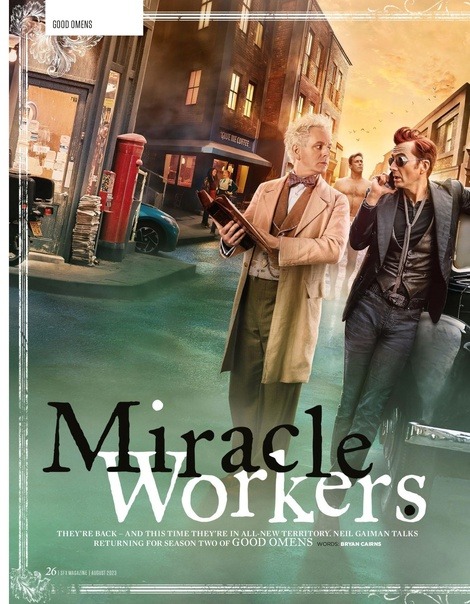
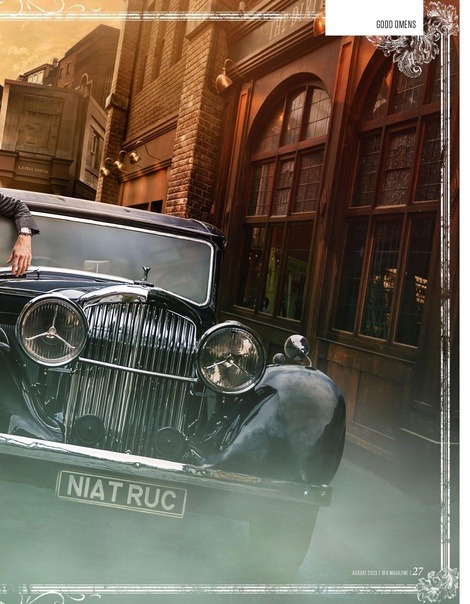
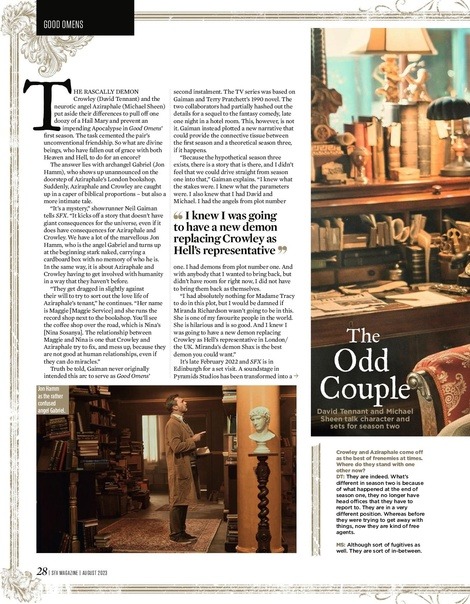

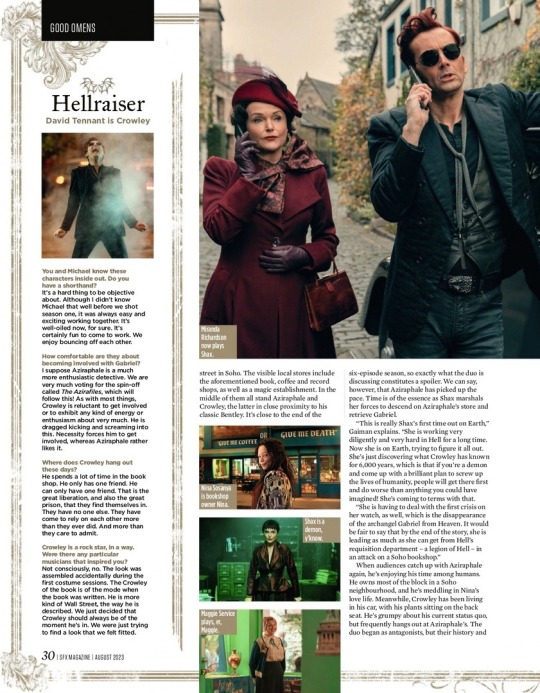

Source
Transcript of main article under the cut:
THE RASCALLY DEMON Crowley (David Tennant) and the neurotic angel Aziraphale (Michael Sheen) put aside their differences to pull off one doozy of a Hail Mary and prevent an impending Apocalypse in Good Omens' first season. The task cemented the pair's unconventional friendship. So what are divine beings who have fallen out of grace with both Heaven and Hell to do for an encore?
The answer lies with archangel Gabriel (Jon Hamm), who shows up unannounced on the doorstep of Aziraphale's London bookshop. Suddenly, Aziraphale and Crowley are caught up in a caper of biblical proportions- but also a more intimate tale.
"It's a mystery" showrunner Neil Gaiman tells SFX. "It kicks off a story that doesn't have giant consequences for the universe, even if it does have consequences for Aziraphale and Crowley. We have a lot of the marvellous Jon Hamm, who is the angel Gabriel and turns up at the beginning stark naked, carrying a cardboard box with no memory of who he is. In the same way, it is about Aziraphale and Crowley having to get involved with humanity in a way that they haven't before.
"They get dragged in slightly against their will to try to sort out the love life of Aziraphale's tenant," he continues. "Her name is Maggie (Maggie Service) and she runs the
record shop next to the bookshop. You'll see the coffee shop over the road, which is Nina's (Nina Sosanya). The relationship between Maggie and Nina is one that Crowley and Aziraphale try to fix, and mess up, because they are not good at human relationships, even if they can do miracles."
Truth be told, Gaiman never originally intended this arc to serve as Good Omens' second instalment. The TV series was based on Gaiman and Terry Pratchett's 1990 novel. The two collaborators had partially hashed out the details for a sequel to the fantasy comedy, late one night in a hotel room. This, however, is not it. Gaiman instead plotted a new narrative that could provide the connective tissue between the first season and a theoretical season three, if it happens.
"Because the hypothetical season three exists, there is a story that is there, and I didn't feel that we could drive straight from season one into that," Gaiman explains. "I knew what the stakes were. I knew what the parameters were. I also know that I had David and Michael. I had the angels from plot number one. I had demons from plot number one. And with anybody that I wanted to bring back, but didn't have room for right now, I did not have to bring them back as themselves.
"I had absolutely nothing for Madame Tracy to do in this plot, but I would be damned if Miranda Richardson wasn't going to be in this. She is one of my favourite people in the world. She is hilarious and is so good. And I knew I was going to have a new demon replacing Crowley as Hell's representative in London/the UK. Miranda's demon Shax is the best demon you could want."
It's late February 2012 and SFX is in Edinburgh for a set visit. A soundstage in Pyramids Studies has been transformed into a street in Soho. The visible local stores include the aforementioned book, coffee and record shops, as well as a magic establishment. In the middle of them all stand Aziraphale and Crowley, the latter in close proximity to his classic Bentley. It's close to the end of the six-episode season, so exactly what the duo is discussing constitutes a spoiler. We can say, however, that Aziraphale has picked up the pace. Time is of the essence as Shax marshals her forces to descend on Aziraphale's store and retrieve Gabriel.
"This is really Shax's first time out on Earth," Gaiman explains. "She is working very diligently and very hard in Hell for a long time. Now she is on Earth, trying to figure it all out. She's just discovering what Crowley has known for 6,000 years, which is that if you're a demon and come up with a brilliant plan to screw up the lives of humanity, people will get there first and do worse than anything you could have imagined! She's coming to terms with that.
"She is having to deal with the first crisis on her watch, as well, which is the disappearance of the archangel Gabriel from Heaven. It would be fair to say that by the end of the story, she is leading as much as she can get from Hell's requisition department - a legion of Hell - in an attack on a Soho bookshop."
When audiences catch up with Aziraphale again, he's enjoying his time among humans. He owns most of the block in a Soho neighbourhood, and he's meddling in Nina's love life. Meanwhile, Crowley has been living in his car, with his plants sitting on the back seat. He's grumpy about his current status quo, but frequently hangs out at Aziraphale's. The duo began as antagonists, but their history and blooming relationship will be fleshed out in flashbacks.
"One of the enormously fun things I came up with in the idea of minisodes," Gaiman explains. They are 25-minute-long episodes within the episode. We have three of them over our six episodes. Each of them is like one of those chunks of episode three (in season one). Whereas the longest one of those was four or five minutes, if that, these are full stories.
"You get to have the story of (put-upon Biblical figure) Job and you learn Aziraphale and Crowley's part in the story. Then writer Cat Clarke takes us to Edinburgh in the 1820s for a tale of body-snatching and attempted murder that the boys get involved in," he adds.
"Finally, Jeremy Dyson and Andy Nyman reunite the League of Gentlemen in a Nazi-period story that takes place very shortly after the episode in the church. That one was the only one I said had to be there, because I fell in love with our Nazi spies in the church I kept thinking, "What would happen if they essentially came back as zombies with a mission from Hell to try and investigate whether or not Crowley and Aziraphale were actually fraternising?"
Gaiman admits that one of the greatest challenges has been filming Good Omens simultaneously with his upcoming show Anansi Bays. The two shoot within throwing distance of each other, but are both time-consuming endeavours.
"If I could go back in time, I would go back to 16 September 2020, when Douglas Mackinnon (co-producer) and I got the phone call from the Amazon bigwigs to say, "We have
good news for you and interesting news for you," Gaiman recalls. "'The good news is we are greenlighting both Good Omens and Anansi Boys. The interesting news is you are going to have to do them both at the same time.'
"I would go back to then and I would throw myself on the call and say, 'Neil, don't! This is unwise.' That we are doing them both together is great. The amount of sleep I am not getting is monumental and monstrous.
"It's a little bit like childbirth, in that I managed to forget all the things that drove me nuts about the first one. Having said that, I managed to fix all the things that really drove me nuts making season one which is great. We just have a whole new set of problems making season two."
#good omens#good omens season 2#crowley#aziraphale#good omens season two#not a shitpost but its good omens babyyyy#SIGH does this mean i need to edit my 40s meta AGAIN? im tiRED OF THIS GRANDPA#edit: missing page
832 notes
·
View notes
Text
Design of Midhope Distillery
The parts of document I'm showing in this post was presented and designed on June 26, 2020

EXECUTIVE SUMMARY
This Design and Access Statement accompanies a Planning Applica- tion for a new Single Malt Scotch Whisky Distillery at Midhope Castle which lies within the Hopetoun Estate on the outskirts of Edinburgh. It is intended this is the first of a series of applications containing proposals to regenerate the Castle, the surrounding listed buildings and landscape setting.
The overall project aims to create an environment to produce, share and market an exceptional whisky. Its success depends not just on the production of whisky but on the ability to invite guests to see the creative process, appreciate its origins and have the time to experi- ence the whisky and the environment. It is intended in the future that the castle will be the venue for a significant part of these activities.
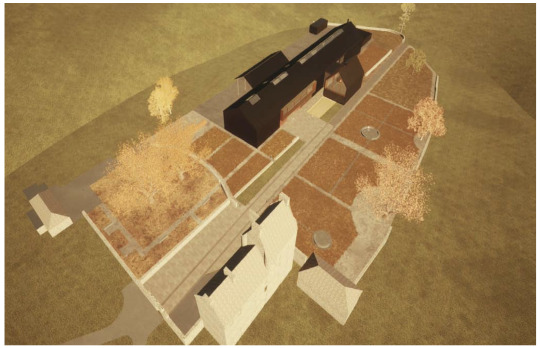

Note, the clients Golden Decanters and Hopetoun estate are the original applicants. Golden Decanters changed their company name since April 2022
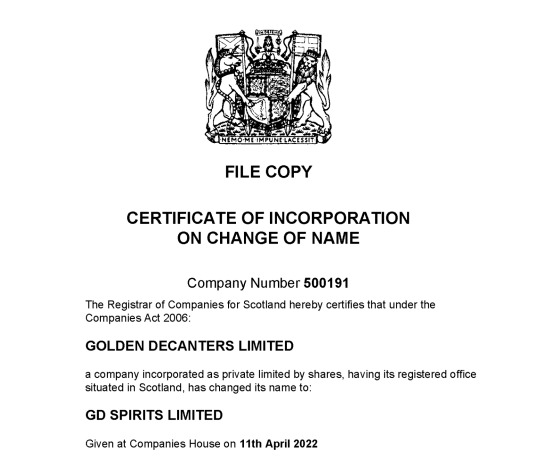
Design Team
Project Manager - Curries & Brown
Currie & Brown works across the public and private sectors, including commercial property, consumer goods, defence, education, funding institutions, government, healthcare, high-tech, hospitality and leisure, industrial, mixed-use developments, nuclear, pharmaceuticals and life sciences, PPP/P3, residential property, retail, trans- portation and logistics and utilities and renewables. wWith our global reach, Currie & Brown brings together a large group of talented professionals to offer our clients a comprehensive range of the services, experience and expertise, together with a significant value added offering.
Planning Consultant - Scott Hobbs Planning
Scott Hobbs Planning (SHP) is an established planning and development consul- tancy founded in 2004, servicing clients throughout the British Isles, for major mixed use, commercial, retail and residential development. The practice has wide ranging and detailed experience in all aspects of planning-related work including national policy shaping, development planning and development management; development framework and master-planning; and consultation processes.
Architect - 56three Architects
56three is a design based Practice with projects covering new build, conservation and refurbishment works throughout the UK.
We have an award winning team of architects, technicians and interior design- ers who are able to provide the full range of architectural services from feasibility through to construction.
Landscape Architect - rankin fraser landscape architects
rankinfraser landscape architecture llp was formed in January 2008. Based in Edin- burgh, Scotland the practice brings together Chris Rankin and Kenny Fraser – two Landscape Architects with over 30 years combined experience of delivering award winning projects from conception through to completion
We combine practice with research and teaching to provide our clients with a thoughtful, creative and professional approach to landscape design and place mak- ing covering public realm, landscape urbanism, housing landscapes, education and health projects in urban and rural situations.
LOCATION
The site is approximately 11.5 miles West of the City of Edinburgh, 5 miles to the North West of Edinburgh airport, 3.5 miles to the West of the South Queensferry, and a little under half a mile South of the Firth of Forth. It has an overall area of 6.9 hectares within the beautifully managed Hopetoun Estate. Hopetoun House is approximately 1 mile East of the site.

SITE
The site is located within Hopetoun Estate but outside the area of the Designated Designed Landscape that surrounds Hopetoun House and Abercorn to the east. The site for the new distillery is located to the immediate west of Midhope Castle.
The Castle is reached via an access road runs for approximately a quarter of a mile, west from the road link between the hamlet of Ab- ercorn and the A904.
The site to the east of the Midhope Burn is largely dense woodland. A Fireworks manufacturing business is currently located in a large clearing near the entrance to the site. This clearing was formerly the location of a Saw Mill.
The access road arrives at a small car park. There is a path that leads to the outer wall of the Castle courtyard.

Midhope Castle is to the north-east of the site with a courtyard and a modest walled garden to the immediate South. Behind the castle, just to the north, is a small derelict Victorian, ancillary building.
In the space to the east of the castle toward the approach road there are two Victorian cottages and a doocot.
The site for the distillery building is to the south-west of the cas-
tle and in an area that is currently occupied by a number of modern agricultural sheds and some hard-standing left from recent utilitarian ancillary structures. The area is functional and has no obvious sig- nificant historic structures. It currently houses the grounds for a tree climbing and chainsaw training company which is in the process of relocating.
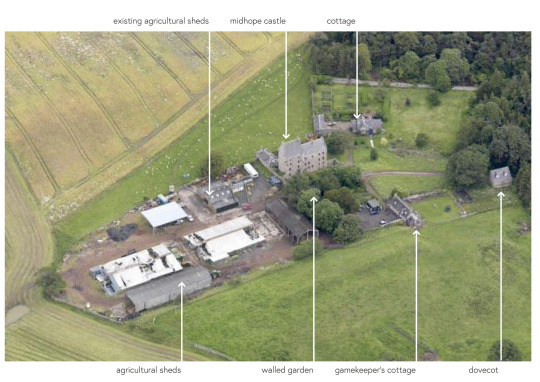






HERITAGE CONTEXT
The original Midhope Castle (recorded as “Medhope Castle”) was built in the late 15th century. In 1587 this castle was partially rebuilt.
The castle was extended in 1664 and reached the general arrange- ment and form that can be seen today. Further extensions and altera- tions took place in 1678.
By the early 20th century the castle was in a state of disrepair and the interior timber staircase recorded as being in poor condition.
In 1988 a programme of consolidation and partial restoration was undertaken. A new roof was formed on the West Tower and steelwork was inserted within the shell of the castle to stabilse the structure. New window frames were inserted into the existing openings. This work seems to have arrested any further significant deterioration.
Today the building is in a ruinous state internally, and most of the in- ternal features have been lost, but is generally wind and water tight.
Midhope Castle was designated as a Scheduled Monument in 1950 and was given a Category A listing in 1971 . In 2018 the Scheduled Monument status was removed and the designation was simplified to the current Category A listing.


The Roy Lowlands map of 1754 shows the castle within the wider context of the Hopetoun House Estate. To the north of the castle are a series of geometrically arranged copses either side of an axis that relates to Hopetoun House to the west. Today some of these trees are still visible.
The landscape around Midhope Castle is also visible on this plan - the series of walls that form the courtyard at the castle, and the larger open area to the west.

The 6 inch map of 1854 more shows Midhope Castle in the form that it can be seen today. The approach path from the east, the Doocot, the gamekeeper’s cottage and the walled garden to the south of the castle are visible.
This plan also shows the state of the landscape to the west of the castle. A path or track extended out from the courtyard into the land- scape and a series of gardens were enclosed to the north.
The south edge of the site was defined by a row of trees that aligned with the walled garden.
The remaining traces of these landscape structures have informed the location of the new distillery building and the landscape strategy.
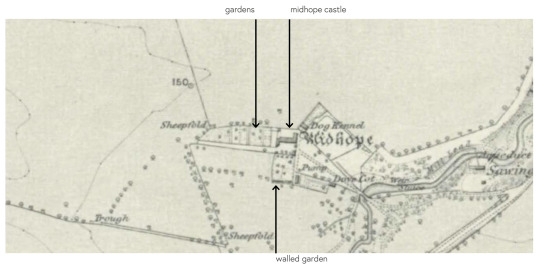
MASTERPLAN APPROACH
The current application is the first in a series of planned phased pro- posals for the site that will initially improve the setting, and stabilise the fabric, of the castle, and later seek to reuse and regenerate the castle.
The construction of the distillery and the production of the whisky need to be the first steps in order to establish the business and generate income in order to progress to the next phases of the wider project.
In the medium term there are also plans to open parts of the castle to facilitate some of visitors who currently visit the site due to the castle’s association with the “Outlander” television series.
There is the ultimate aim to use the castle for visitor functions that are complimentary to the new distillery – tasting spaces, dining, and potentially overnight accommodation.
All of these future works will carefully balance the repair and refur- bishment of the existing historical fabric of the castle and surround- ing landscape features. Further refinement of the timing and content of these next phases will reviewed as the project develops.

VISION
Initial works
The current Planning Application is for the new distillery building together with the immediate landscaping, a new access road and the change of use of Midhope Castle to visitor accommodation.
An application for Listed Building Consent will follow. This will include the repair and refurbishment works to the landscape features around the castle- the reinstatement of the damaged stone piers, the re- gaining of the walled garden and cobbled castle forecourt and the potential removal of derelict outbuildings. It has not been possible to gain access to the site to carry out these surveys due to restrictions imposed by the Covid 19 crisis.
Next steps
Future Planning Applications and Listed Building Applications are planned as the business becomes established. These include plans for a Maltings Building at the former Sawmill site, work to the castle and extensions as appropriate, repurposing of the Dovecot, and other facilities in the grounds of the castle and distillery.
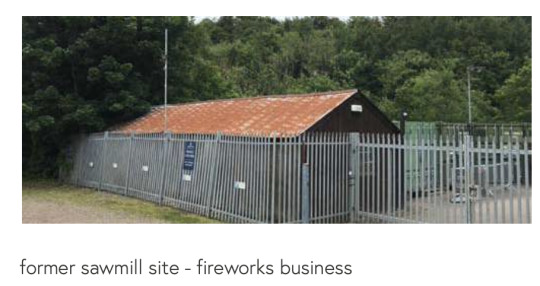

SCOPE OF INITIAL PHASE
It is possible to conceptually divide the site into two areas, they can broadly be described as modern farm building land and the castle grounds. It is not intended that the physical distinction between the areas be over emphasised in the finished design but it is a useful tool in describing the approaches to the specific areas. The distillery is proposed to be on the farm building land, with the main road and the access road coming across the castle grounds.
The farm building land does not have any obvious structures of histor- ic significance, whilst the castle grounds are rich with elements that are historically significant and referred to in the category A listing of the castle and the Category B listing of the Doocot.
The historic influence on the farm building land is most strongly ap- parent in its relationship to the castle grounds. The land spreads in
a relatively level expanse from the castle and forms the base of an approximate bowl. This reinforces the sense that the area that will house the distillery, despite being the larger area, is attendant on the castle as the most substantial historic structure on the site.
Very little work is proposed to the immediate castle grounds in this application. The client wishes to take the time to carefully consider the appropriate design and relationship with the existing buildings. The intention is to intervene in this area as little as possible at this point and only to the extent that is required to access the distillery site without negatively affecting the significant historic fabric.
The castle grounds are subject to ongoing analysis and will be the focus of future applications in subsequent phases.
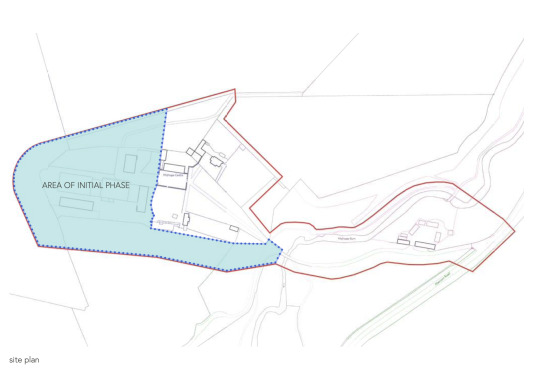
DESIGN PROPOSALS
The distillery is seens as the first phase of a sequence of develop- ments on the wider site aimed at enriching the landscape and improv- ing the setting and fabric of Midhope Castle.
The aspiration is to create a unique place where the production of Whisky, the landscape it draws from and the heritage of the site can be enjoyed. The setting and location is key to the proposal.
The new distillery building will have two main functions. It will pro- duce over 500,000 litres of whisky a year from Barley grown on the Estate. It will also offer visitors the opportunity to see all aspects of the Whisky production process and to enjoy the unique historical set- ting and landscape.
The setting of the distillery is one that has many layers of history. It will be close to Midhope Castle, which is known to date from the fif- teenth century and along with the land around has been altered many times over the subsequent years. The castle was occupied until the 1920s and each periodw has resulted in change. The additions to the castle are clear to see, and there are buildings around the castle that date from the 1800s. The setting shows a timeline of agricultural use and castle shows evidence of the varied occupation that ranges from aristocracy to the workers on the land.
The castle is the embodiment of the historic significance of the site, and this position is to be carefully maintained. The orientation of the new design is lead by the influence of the existing fabric. It’s form will have a larger footprint but a lower height, it will not compete with the castle but rather work alongside it, and by looking toward the castle’s raised entrance create an exciting new dynamic.

SETTING & ACCESS
The approach to the site will be along the existing track which winds through dense woodland to a clearing that is currently used as a car park for visitors to the castle.
From here a new access route is proposed to take service traffic for the distillery to the south, away from the castle and existing cottages.
The existing footpath leads up to the castle courtyard past the listed dovecot building and existing Victorian cottage and outbuildings to the north.
The courtyard sits between the castle and the overgrown walled gar- den to the south. To the west of this enclosed outdoor space is the open area currently given over to light industrial and agricultural use. This largely flat area of land sits within a shallow depression relative to the surrounding wider agricultural landscape. This will be the site of the new distillery.
The distillery begins to be visible on moving through the courtyard. The new building will align with the traces of an route that once ran through this area out to the west.

SETTING & RESPONSE
The new building consists of three, simple shed-like forms.
The largest is a long, pitched roof building that edges the south of the site. This building will contain most of the distillery production areas and spaces for visitors – a display area containing whisky ma- turing in barrels, tasting spaces, and multi-purpose areas that can be used for exhibitions and functions.
To the north is a second smaller pitched roof form that contains the stills and shelters the worm tubs.
To the south a third pitched roof form encloses external tanks and barrel storage.
A service yard is located to the south of the distillery and sits be- tween the new building and the existing embankment. The service yard and the more industrial activity is hidden from view from the surrounding landscape and most importantly is invisible from the ap- proach road and castle. Access to the service yard will be provided by a new road formed to the south of the main site.
The public areas of the distillery will offer views back to the castle and the landscape to the north. The landscape around the distillery will reinstate paths and routes that we once on the site.

DESIGN DEVELOPMENT
The basic form of the new building has been influenced by common simple, robust utilitarian agricultural buildings. From a distance the distillery will appear as a grouping of simple, quiet forms in the land- scape.
The still house will be wrapped in timber giving it an abstract quality. This building will contain the stills and their copper forms will be vis- ible through the glazed gable facing the castle courtyard.
The still house sits in a cooling pond and forms a gathering place at the visitor entrance to the distillery. This entrance aligns with both the reinstated road and wall running east to west but also with the existing track that leaves the site to the north.
A large framed window on the first floor of the distillery offers pano- ramic views back to the castle, across the structured landscape close to the distillery and further to the agriculutral fields of the estate beyond. These large windows will be edged in bronze metal cladding,
The maturation display area at the east end of the building will be clad in stained or charred slatted timber that will allow in direct light into the space. On dark evenings this end of the building will glow and act as a lantern drawing visitors across the landscape from the castle.
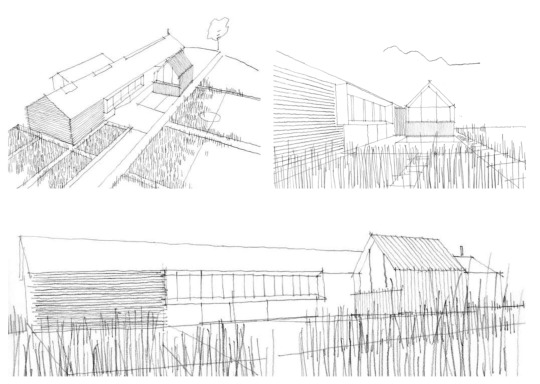




As I showed in my previous post, these plans are now revised and filed again on 8 February 2024, awaiting a decision. This document was filed on 21 March 2024. There are some minor changes to the original plans which were already approved in 2021

52 notes
·
View notes
Text
Dr James Barry, the Transgender Man who Became British Colonial Medical Inspector in 1822

The Vagina Museum tells the story of the transgender man who became a famous military surgeon in Britain in the 19th century.
Dr James Barry (circa 1789-1865) was a renowned military surgeon who is probably better known for the speculation about his gender than his illustrious career. So let's set the record straight about the work of this brilliant healer.
A famous surgeon outed after death
James Barry was assigned female at birth. This was only revealed after his death. The fact was made public as the woman who laid his body out after his death was disgruntled at not being paid for her work, so she ended up taking a story about his body to the press.
The story was somewhat newsworthy because in his lifetime, Barry was a famous surgeon, something of a rockstar in the military and surgical worlds.
It's hard to tease out details of Barry's early life due to posthumous speculation - once the news broke, several people claimed they'd known all along, or told stories about his supposed femininity, and the whole story was viewed through the lens of 19th century gender politics.
Even Barry's precise date of birth is not known - the likely date seems to be around 1789, but it may have been as late as 1799. Barry is known to have lied about his age, because his appearance was very youthful, and he sometimes passed himself off as younger than he was.
His life
Barry studied at the University of Edinburgh, and received his qualification as a doctor of medicine in 1812, when he would have been about 19 or 20 years old (or 10, according to his own account of his age!). After this, he studied in London and qualified as a surgeon in 1813.
He proceeded to join the British army, enlisting as a hospital assistant just four days after qualifying as a surgeon. During his 46 years of service, he gained huge renown as a surgeon and a doctor.

Surgeon in South Africa
In 1816, Barry went on his first overseas posting as an assistant surgeon. He was posted to Cape Town, and quickly became friends with the governor, Lord Charles Somerset. The friendship began because Barry treated Somerset's sick daughter spectacularly well.
Later in his life, in 1829, Barry went absent without leave from the army when Somerset himself became sick. He spent two years treating his friend until Somerset's death.
Colonial Medical Inspector
In 1822, Somerset promoted Barry to the role of Colonial Medical Inspector, which was an astronomical leap in Barry's career. Sometimes, though, the friendship raised eyebrows. In 1824, Somerset and Barry were accused of having sex with each other.
Barry's renown grew hugely during the ten years he spent in South Africa. He is sometimes credited as the first doctor to successfully perform a C-section in Africa where both survived, though that credit may better go to indigenous Africans
Throughout his long surgical career, Barry was posted all around the world, serving in the West Indies, Europe, America, and Africa. Following him was a reputation for excellence. Wherever he went, sanitation greatly improved, and soldiers and local people alike became healthier.
A bit of a jerk
Barry achieved all of this by being kind of a jerk. He was known to be quick-tempered, heavy-handed, argumentative and tactless. He rubbed his colleagues up the wrong way.
Barry's career wasn't a completely upward trajectory, because he sometimes got himself court-martialed or demoted due to his behaviour. He famously won a duel against a colleague, and shot the man's hat clean off his head.
Quarreling with Florence Nightingale
One of his most famous arguments was with Florence Nightingale herself during the Crimean War. When writing about it, years later, Nightingale doesn't specify the cause of the argument, but Barry lived rent-free in her head following it.
[Florence Nightingale was an very famous English social reformer, a statistician and the founder of modern nursing.]
Loved by his patients
Barry's patients loved him, though. As well as being a talented physician and surgeon, he reputedly had a good bedside manner.
Barry's military career came to an end in 1859. He didn't leave, and he wasn't sacked for being a difficult person to work with. He was forcibly retired because he was old, and his health was failing. Six years later, he died in London, from dysentery.
In the century and a half since his death, discussion of James Barry has mostly focused on speculation about his gender. But that, perhaps, is one of the least interesting things about this remarkable doctor.
Top photo of Barry (centre), his dog and John, his servant, circa 1862, via Wellcome Images. Second photo: Portrait claimed to be of Barry, ca. 1820s
Thread from twitter (which we refuse to call X as long as Elon Musk is deadnaming his transgender daughter).
124 notes
·
View notes
Text
If I had a nickel for every time my dad unintentionally got me invested in an established, wildly popular IP through its new live-action show that was released on a streaming service, I'd have two nickels, etc., etc.
Actually, scratch that, I'd have at least three!
But seriously, my dad is one of those people that streaming services probably kill for: a guy who, even though he has no idea what the IP is, will get interested enough in a show's advertising (or, better yet, just interested in the vibes of it when he stumbles across it on the service's main menu) that he'll want to watch it out of pure interest.
This happened with One Piece, when I was uninterested in watching the new Netflix adaptation because of how little I knew about the franchise (and now my dad and I are 200+ episodes into the anime).
This happened with The Last of Us, which I was uninterested in watching because I didn't know anything about the original games (I'm especially glad I watched the show because afterwards, I could thoroughly appreciate the Last of Us cocktails that I got at an Edinburgh popup bar).
And now it's happened with Fallout, which I was uninterested in because, while I knew a teeny bit about the games, I thought I wouldn't enjoy because I didn't play/watch any of those games, and I'm not really a post-apocalypse kinda person (and yet, when I watched the show with my dad, I surprised myself with just how many references I got and how much I cared about its faithfulness to details from the games).
And EVERY TIME this happened, with my dad either begging me to watch this show he viewed while I was away from home (Last of Us), begging me to watch a new show with him because he likes watching TV with other people (Fallout), or just putting it on one evening out of interest while I was in the room (One Piece), he had no idea what its origins were, at least when he first started watching.
For example, with the Netflix One Piece show, after watching a few scenes with him, I remember remarking, "Huh, I didn't think you'd be interested in a live action anime adaptation."
He immediately replied, "Wait, this was an anime?"
Same thing happened with Fallout when I mentioned that I didn't know too much about the video games.
I don't really have a good conclusion to this post. I just thought it was a fascinating thing to have happened more than once. Good on you, dad, for proving that people can get into live-action adaptations for more than familiarity/nostalgia.
9 notes
·
View notes
Text
"Good Omens" season 2 info (NYCC)
See new images, characters, actors (new and returning), details, and runtime/episode count under the cut! Info revealed at the NYCC panel (10/7/22) with new photos released online by Prime Video.
New characters, new & returning actors:
1) The actresses who played sisters Teresa and Mary Loquacious, Maggie Service and Nina Sosanya, are returning as new characters, whose true names have yet to be revealed. (Their actual names are being used temporarily for their characters, maybe, I think.)

2) "Maggie" is a human who runs a record store beside Aziraphale's bookshop in soho. She thinks Aziraphale is a descendant of very similar looking ancestors, kinda like Kingo in Eternals.

3) "Nina" is a human who works at a coffee shop across from Maggie's store, called "give me coffee, or give me death". She's good at dealing with lots of different people who come into the shop, and is kinda fearless. Her love life is "doomed" at the beginning.

4) SHAX: The actress who played Madam Tracy, Miranda Richardson, will also return as a new demon named "Shax", who was sent to earth to replace Crowley after he was fired.

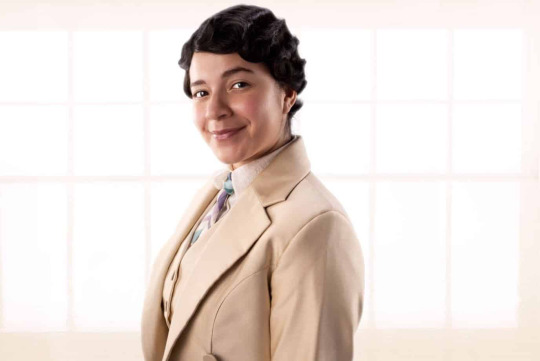
5) MURIEL: Similarly, a new angel is sent to earth to seemingly observe Aziraphale and Crowley. "Muriel" is played by a new actress, Quelin Sepulveda. She's spent 6,000 years in an office in heaven, just filing things basically, almost never interacting with others. She's very gullible, curious, chatty, and good/well meaning (unlike the angels we saw in season 1, who Neil said were all bastards, lol). This is her first time coming to earth.
Episodes, new details, and more:
1) It's 6 episodes, about 45 minutes each. It releases summer 2023. According to Neil: Az & C are back in soho. There are some love stories in it, you'll learn a lot about Jane Austen that you didn't know before, and it features a lot more of heaven and hell.
2) Episode 3 will feature Az & C in 1827, in Edinburgh, Scotland. (I wonder whether this is related to the bit about Jane Austen? Idk, she lived in England and passed 1817.)

Gee, I wonder who this "love story" will involve...
#videos#pics#good omens#good omens season 2#good omens spoilers#good omens s2#ineffable husbands#ineffable boyfriends#aziraphale#crowley#aziraphale and crowley#michael sheen#david tennant#nina sosanya#quelin sepulveda#miranda richardson#maggie service#muriel good omens#neil gaiman#nycc#good omens nycc panel
220 notes
·
View notes
Text
Anne Elizabeth Alice Louise: The Only Daughter

Her father was:
Prince Philip, Duke of Edinburgh (born 'Φίλιππος' / Philippos Andreou of Schleswig-Holstein-Sonderberg-Glücksburg, Prince of Greece and Denmark, later Philip Mountbatten)



Anne's happiness is one of the most important things in Prince Philip's life; and he can deny her nothing. He has never been less than delighted with his only daughter, who has remained close and become increasingly dear to him as time has passed. (Prince Philip’s bond with his only daughter)
"You know it’s going to happen but you are never really ready. My father has been my teacher, my supporter and my critic, but mostly it is his example of a life well lived and service freely given that I most wanted to emulate.
His ability to treat every person as an individual in their own right with their own skills comes through all the organisations with which he was involved. I regard it as an honour and a privilege to have been asked to follow in his footsteps and it has been a pleasure to have kept him in touch with their activities.
I know how much he meant to them, in the UK, across the Commonwealth and in the wider world. I would like to emphasise how much the family appreciate the messages and memories of so many people whose lives he also touched. We will miss him but he leaves a legacy which can inspire us all."
(A message from The Princess Royal following the death of her father, The Duke of Edinburgh, released 11 April 2021)
Her mother was:
Elizabeth II, Queen of the United Kingdom and other Commonwealth realms (born Her Royal Highness Princess Elizabeth Alexandra Mary of York)


Princess Anne and the Queen have always been the closest a mother and daughter can be, except perhaps on those occasions when Anne has been in one of her moods. But now they became even closer. The Queen wanted Anne to be the one at her side, and apparently found difficulty in discussing it in any real detail with anyone other than her daughter. In the remaining few days before the Royals began their summer holidays, Anne gave up as much time as she could to stay with the Queen, and joined her as well at the family’s summer home at Balmoral. It was Anne’s presence that helped give the Queen her outwardly untroubled attitude. (Queen Elizabeth II and Princess Anne’s closeness following the Michael Fagan incident in 1982)
"I was fortunate to share the last 24 hours of my dearest Mother’s life. It has been an honour and a privilege to accompany her on her final journeys. Witnessing the love and respect shown by so many on these journeys has been both humbling and uplifting.
We will all share unique memories. I offer my thanks to each and every one who share our sense of loss.
We may have been reminded how much of her presence and contribution to our national identity we took for granted. I am also so grateful for the support and understanding offered to my dear brother Charles as he accepts the added responsibilities of The Monarch.
To my mother, The Queen, thank you."
(A statement from The Princess Royal following the death of her mother, Her Majesty The Queen, released 13 September 2022)
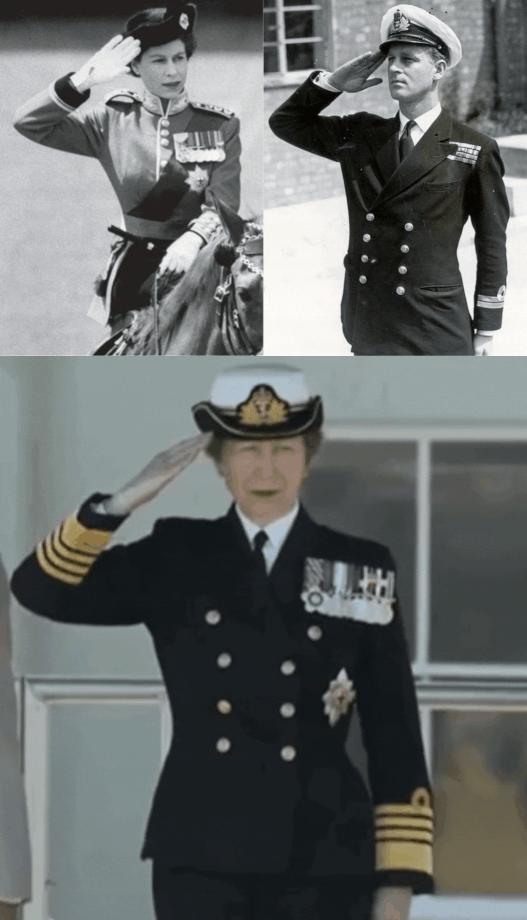
#tortured myself when i decided to make this#i was literally ugly crying#my tribute to my og otp#my fave trio#princess anne#anned mum#queen elizabeth ii#papa's wingman#prince philip#from a fanne
182 notes
·
View notes
Text


CATHERINE'S STYLE FILES - 2023
5 JULY 2023 || The Duchess of Rothesay attended the National Service of Thanksgiving and Dedication to the coronation of King Charles III and Queen Camilla at St Giles' Cathedral in Edinburgh.
Catherine was in -
↬ 'Mayfair' Blue Coat in Blue with Bespoke Details by Catherine Walker
↬ Bespoke Ascot Day Hat in 'Blue' by Philip Treacy
↬ Queen Elizabeth's Four Row Japanese Pearl Choker
↬ Princess Diana's Collingwood Pearl Drop Earrings
↬ Princess Diana's Three Strand Pearl Bracelet by Nigel Milne
↬ Scalloped Clutch in Blue (possibly L.K. Bennett's Dora Clutch)
↬ 'Rebecca' Pumps in 'Cobalt Suede' from Emmy London
#catherines style files#style files 2023#princess of wales#the princess of wales#princess catherine#duchess of rothesay#catherine walker.#philip treacy.#nigel milne.#emmy london.#queen elizabeth ii : japanese pearl choker#queen elizabeth ii : japanese pearl choker.#Queen Elizabeth's Four Row Japanese Pearl Choker#princess diana : collingwood pearl earrings#collingwood earrings.#collingwood pearl earrings.#princess diana three strand pearl bracelet.#princess diana : three strand pearl bracelet.#nigel milne three strand pearl bracelet.#princess diana : nigel milne three strand pearl bracelet.#three strand pearl bracelet.#royal fashion#service of thanksgiving for coronation edinburgh 23#Edinburgh Flypast 23#05072023#fashion#british royal family#british royals#kate middleton#british royalty
43 notes
·
View notes
Text
When it comes to keeping your car in pristine condition, the key is in the details. From the gleaming exterior to the spotless interior, a well-maintained vehicle not only looks great but also maintains its value over time. In Edinburgh, auto wash and valet services are the go-to solution for car owners who demand the perfect shine every time.
#Auto wash and valet Edinburgh#local mobile car valeting#car detailing and protection Edinburgh#car detailing edinburgh#car valet services Edinburgh#mobile car valeting Edinburgh
0 notes
Text
Coronation Round-Up
With the announcement of Charles’s coronation emblem and the recent “100 Days Till Coronation” social media post, I decided to compile all of the rumors and theories about Charles’s coronation for your entertainment.
None of these have been verified. All of these are allegedly and for entertainment purposes only. I do not subscribe to nor endorse any of these.
I’ll update this list with any new ones I’ve learned from now till May.
Camilla will be crowned Queen, not Princess Consort. (This has been around since 2005 when Charles was trying to get public support for his marriage to Camilla. Obviously, it was confirmed in February 2022.)
Charles will abdicate. (2017)
Charles and Meghan had an affair during the Sussex engagement, which will be exposed before Charles’s coronation, causing a public crisis that will cause him to abdicate.
Charles will remove Lili from the Line of Succession and bury it in the press surrounding his coronation because she was born under false pretense, i.e. not “of the body”.
Charles and Camilla had a son together who was born in 1965 and adopted out. The BRF is aware of this child, including Harry, who told Meghan, who is using knowledge of this love child to blackmail the BRF and who will leak or publish the details, causing Charles to abdicate before the coronation.
Charles will be crowned King Philip. (Busted)
Royal christening for Lili in Britain around Charles’s coronation as part of reunion PR.
Camilla to become embroiled in a scandal concerning her son, Tom PB, before the coronation that results in her children being excluded from the events.
Charles’s coronation scheduled for June 2, 2023, on the anniversary of The Queen’s coronation. (Busted)
Charles to abdicate monarchy before his coronation due to health issues related to his heart.
Middleton family to be invited to Charles’s coronation and given prominent placement in audience.
William’s investiture as POW to take place as part of Charles’s coronation ceremony.
Charles to allow Archie and Lili to keep Prince/Princess but no HRHs as part of coronation honors.
Charles’s coronation on June 3, 2023, at Westminster Abbey. (Busted)
Charles’s coronation will see a dress code of morning suits and long dresses, with robes and tiaras for working royals only.
William to have a scaled-down investiture, likely just a church service of some kind in Wales with just family and Welsh charities, no international guests and nowhere close to the scale of Charles’s investiture.
Kate will be pregnant at Charles’s coronation.
Harry’s public downfall/exile to be cemented at Charles’s coronation. Either worse placement than at the Jubilee’s service of thanksgiving or he will be “candled” in the public broadcast.
Meghan to copy/mimic Queen Elizabeth’s coronation dress for Charles’s coronation.
Charles to organize his coronation service to minimize or exclude Harry and Meghan, or their status/existence are not being considered in the decisions and seating plans.
Meghan will not be invited to the coronation but Harry will be. Harry will refuse to go without Meghan and demand an invitation for her. Neither will attend the coronation.
Charles to establish Duchess of Edinburgh as title for the sovereign’s daughters and retire the Princess Royal title to be Anne’s in perpetuity. Announcement made as part of coronation honors.
Charlotte to receive Duchess of Edinburgh at Charles’s coronation.
Harry and Meghan will be intentionally not invited to the coronation. Decision will be by Charles.
Sussex divorce announcement to overshadow Charles’s coronation. Announcement to drop in the run up to the event.
Charles will tie Meghan’s invitation to the coronation to seeing and spending time with Archie and Lili; no kids, no Meghan.
Charles to abdicate in March 2023. Coronation on May 6th will see William anointed instead.
UK government to intervene with Harry and the BRF over his memoir and force uninvite to the coronation.
Meghan to publicly file for divorce citing irreconcilable differences if she does not get invited to the coronation. Expect an Amber Heard-like press conference.
No role for Harry at Charles’s coronation. (This is from Roya Nikkah who has been wrong before in the past with some of her royal scoops.)
Harry won’t attend Charles’s coronation because there won’t be a role for him and/or he was tipped off about poor seating placement.
Harry and Meghan invited to the coronation but Meghan refuses to go on grounds of her treatment at The Queen’s funeral (exclusion, being largely ignored, being blocked from the public broadcast by candle placement) and is forcing Harry to choose “me or them.” He will choose her and not attend.
Only the Waleses will be in robes and cornets for Charles’s coronation.
Harry to have public meltdown or tantrum in response to criticism of his attendance at the coronation or sidelined status during coronation events (including where his assigned seat is for the service).
Charles to offer a deal for Harry and Meghan. Miss the coronation and they can attend Trooping instead, with carriages and priority spots on the balcony for themselves and the children.
Tax issues for Harry and Meghan (similar to Wesley Snipes) because they didn’t set up the Archewell companies correctly, misappropriated donations and other funding, and didn’t declare their income. Details to come out in March 2023 and overshadow Charles’s coronation, resulting in un-invites.
Meghan’s use of a surrogate, and Harry’s knowledge of and participation in the scheme, to be made public in March 2023 and also implicate Charles, who will be forced to abdicate before his coronation to save the monarchy.
Meghan not invited to the coronation but will attempt to crash it by traveling with Harry to London for the event.
Harry’s attendance at and participation in coronation events, including the ceremony, is contingent on a public apology to the whole royal family and a public recanting of lies told in Oprah, Netflix, and Spare.
Harry will refuse to attend the coronation and instead be a commentator for U.S. network television because he needs the money.
Edward to get Duke of Edinburgh as part of Charles’s coronation honors.
Kate to wear the Girls of Great Britain and Ireland tiara for Charles’s coronation.
Kate’s dress for Charles’s coronation to be a McQueen rewear.
Andrew to be excluded from all coronation events.
Security camera footage of Meghan mistreating Charlotte to be leaked or posted online, resulting in the Sussexes being uninvited from the coronation.
Tiaras and balcony appearance for senior working royals at Charles’s coronation only.
Harry and Meghan to attend coronation, be sidelined like Beatrice and Eugenie - they will be demoted in the order of preference to sit and walk behind the working royals (Waleses, Anne, Wessexes, Kents, and Gloucesters), no tiaras, robes, or big jewelry loans otherwise, Archie and Lili excluded.
Charlotte to wear small tiara at the coronation or a kind of tiara-like headband.
George, Charlotte, and Louis to attend the whole coronation service.
If Louis doesn’t attend the coronation service, then he will attend the Windsor concert on 5/7 instead.
Harry to be brough to Britain in a Bond-like secret agent mission for 48 hours to attend the coronation. No Meghan, Archie, or Lili.
Sussex family to travel to London for the coronation. Meghan to throw big birthday party bash at Frogmore Cottage for Archie on May 6th and demand the whole family attend after Lili’s birthday party was snubbed. No one in the BRF to attend due to coronation priorities.
Meghan to try and overshadow coronation events from Montecito (like a birthday photoshoot for Archie), BRF to clap back with a new heirs photo of Charles, William, and George in regalia.
Meghan to wear Diana cosplay for coronation service.
Harry to attend Charles’s coronation service but will audibly and visibly refuse to support him during the service. Everyone will witness it.
Sussexes won’t attend Charles’s coronation and blame it on security lawsuits.
Harry to host Saturday Night Live on May 6th instead of attending Charles’s coronation.
No new birthday portraits for Charlotte and Louis this year. Instead, we will get coronation portraits of them in regalia a few days later.
63 notes
·
View notes
Text

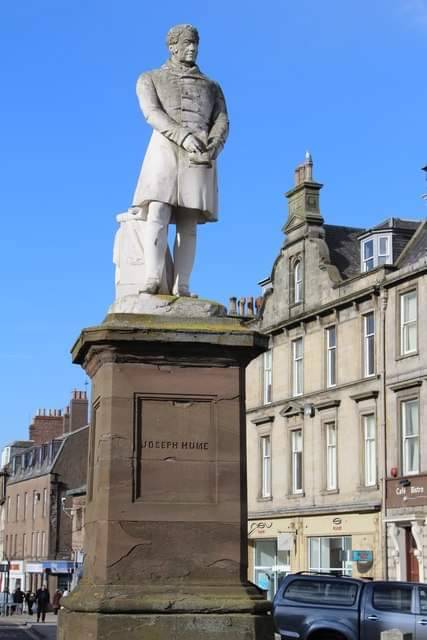
January 22nd 1777 saw the birth, in Montrose, of Joseph Hume.
The son of James Hume, shipmaster, and Mary Allan who ran a crockery stall at the local markets, there is not a lot of detail on Hume's early years other than he lost his father at a young age, he was apprenticed to a local surgeon and sent for medical training at the University of Edinburgh.
Joseph Hume became an assistant surgeon in the East India Company in 1797. His proficiency for language enabled him to become very wealthy during his service in India. After the end of the Mahratta War he moved to England and was influenced by the political philosophy of James Mill and Jeremy Bentham.
He served as a Member of Parliament for the Weymouth constituency in 1812 and then for a variety of constituencies in Scotland, England and Ireland from 1818-55. At the start of his political career he held Tory principles but became more and more liberal and radical. He was a proponent of Catholic Emancipation, the extension of voting rights, the promotion of savings banks and free trade. He also actively campaigned for the abolition of corporal punishment in the armed forces, press-ganging in the Navy and custodial sentences for those in debt.
He died on 20 February 1855 at Burnley Hall in Norfolk.
The pic is a portrait of Joseph Hume, by J P Heally.
There is an extended biography on Joseph Hume here https://www.historyofparliamentonline.org/…/hume-joseph-177…
11 notes
·
View notes
Text

Another red-letter moment for today - 10 Years Ago Today - on the NYC subway... October 31st, 2013
one for the I Love New York file...
Not even sure this was a Halloween costume... but how fab is this dude? :: [Mary Elaine LeBey]
* * * *
"I’ll never forget the first time I went (well the details are a little blurry). It was back in 2006, I was working some bullshit part-time job in Mid-Town which to my surprise, involved spending all day in a factory putting price stickers on Christmas Cards. I befriended an Australian girl, one of those wandering couch-surfing types, who had just arrived from Edinburgh and was living in the projects in the LES. Let’s just say she had a lot of circus friends, if that paints any sort of picture. Anyways, I digress, she really wanted to see some DJ at Rubulad so we headed over there on Halloween night. For people who normally dress in costume on regular days, you can imagine the sort of glue-gun creations that showed up on Halloween. It made Paris is Burning look like a JC Penney catalog. There were multiple floors, crazy decorations hanging from everything and everyone in masks. I felt like I was inside David Bowie’s masquerade ball in the Labyrinth. Of course those are also the perfect conditions to lose people and find yourself sitting on a bench by yourself holding a mysterious cup of punch, wondering how you got there. The only thing I do remember was stepping over puke outside, jumping into a car I hoped was a car service, and thinking I had a really good time."
from "Rubulad - The Burning Man of Brooklyn"
[alive on all channels]
#Mary Elaine LeBey#costume#Halloween#NYC#subway#Rubulad#The burning Man of Brooklyn#night life#alive on all channels#quotes
13 notes
·
View notes
Photo
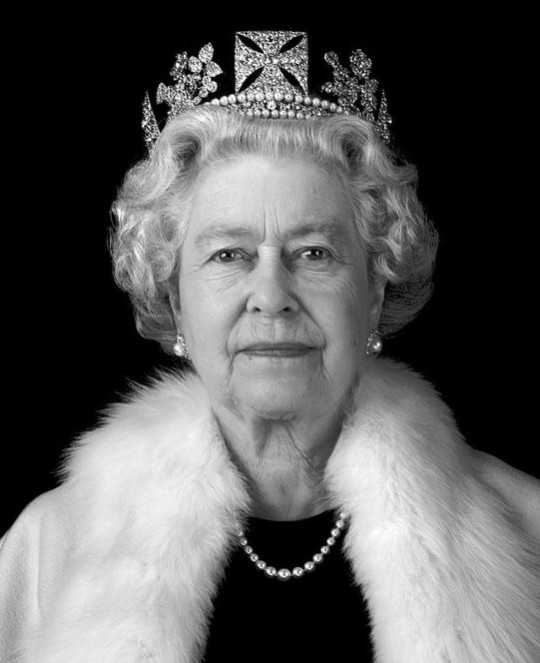
The long reign of Queen Elizabeth II was marked by her strong sense of duty and her determination to dedicate her life to her throne and to her people.
She became for many the one constant point in a rapidly changing world as British influence declined, society changed beyond recognition and the role of the monarchy itself came into question.
Her success in maintaining the monarchy through such turbulent times was even more remarkable given that, at the time of her birth, no-one could have foreseen that the throne would be her destiny.
Elizabeth Alexandra Mary Windsor was born on 21 April 1926, in a house just off Berkeley Square in London, the first child of Albert, Duke of York, second son of George V, and his duchess, the former Lady Elizabeth Bowes-Lyon.
Both Elizabeth and her sister, Margaret Rose, who was born in 1930, were educated at home and brought up in a loving family atmosphere. Elizabeth was extremely close to both her father and her grandfather, George V.
At the age of six, Elizabeth told her riding instructor that she wanted to become a "country lady with lots of horses and dogs".
She was said to have shown a remarkable sense of responsibility from a very early age. Winston Churchill, the future prime minister, was quoted as saying that she possessed "an air of authority that was astonishing in an infant".
Despite not attending school, Elizabeth proved adept at languages and made a detailed study of constitutional history.
A special Girl Guides company, the 1st Buckingham Palace, was formed so that she could socialise with girls of her own age.
Increasing tension
On the death of George V in 1936, his eldest son, known as David, became Edward VIII.
However, his choice of wife, the twice-divorced American Wallis Simpson, was deemed to be unacceptable on political and religious grounds. At the end of the year he abdicated.
A reluctant Duke of York became King George VI. His Coronation gave Elizabeth a foretaste of what lay in store for her and she later wrote that she had found the service "very, very wonderful".
Against a background of increasing tension in Europe, the new King, together with his wife, Queen Elizabeth, set out to restore public faith in the monarchy. Their example was not lost on their elder daughter.
In 1939, the 13-year-old princess accompanied the King and Queen to the Royal Naval College at Dartmouth.
Together with her sister Margaret, she was escorted by one of the cadets, her third cousin, Prince Philip of Greece.
Obstacles
It was not the first time they had met, but it was the first time she took an interest in him.
Prince Philip called on his royal relatives when on leave from the navy, and by 1944, when she was 18, Elizabeth was clearly in love with him. She kept his picture in her room and they exchanged letters.
The young princess briefly joined the Auxiliary Territorial Service (ATS) towards the end of the war, learning to drive and service a lorry. On VE Day, she joined the Royal Family at Buckingham Palace as thousands gathered in The Mall to celebrate the end of the war in Europe.
"We asked my parents if we could go out and see for ourselves," she later recalled. "I remember we were terrified of being recognised. I remember lines of unknown people linking arms and walking down Whitehall, all of us just swept along on a tide of happiness and relief."
After the war, her desire to marry Prince Philip faced a number of obstacles.
The King was reluctant to lose a daughter on whom he doted, and Philip had to overcome the prejudice of an establishment that could not accept his foreign ancestry.
But the wishes of the couple prevailed and on 20 November 1947 the couple married in Westminster Abbey.
The Duke of Edinburgh, as Philip had become, remained a serving naval officer. For a short time, a posting to Malta meant the young couple could enjoy a relatively normal life.
Their first child, Charles, was born in 1948, followed by a sister, Anne, who arrived in 1950.
But the King, having suffered considerable stress during the war years, was terminally ill with lung cancer, brought about by a lifetime of heavy smoking.
In January 1952, Elizabeth, then 25, set off with Philip for an overseas tour. The King, against medical advice, went to the airport to see the couple off. It was to be the last time Elizabeth would see her father.
Elizabeth heard of the death of the King while staying at a game lodge in Kenya and the new Queen immediately returned to London.
"In a way, I didn't have an apprenticeship," she later recalled. "My father died much too young, so it was all a very sudden kind of taking on and making the best job you can."
Personal attack
Her Coronation in June 1953 was televised, despite the opposition of Prime Minister Winston Churchill, and millions gathered around TV sets, many of them for the first time, to watch as Queen Elizabeth II made her oath.
With Britain still enduring post-war austerity, commentators saw the Coronation as the dawn of a new Elizabethan age.
World War Two had served to hasten the end of the British Empire, and by the time the new Queen set off on a lengthy tour of the Commonwealth in November 1953, many former British possessions, including India, had gained independence.
Elizabeth became the first reigning monarch to visit Australia and New Zealand. It was estimated that three-quarters of Australians turned out to see her in person.
Throughout the 1950s, more countries hauled down the union flag and the former colonies and dominions now came together as a voluntary family of nations.
Many politicians felt that the new Commonwealth could become a counter to the newly emerging European Economic Community and, to some extent, British policy turned away from the Continent.
But the decline of British influence was hastened by the Suez debacle in 1956, when it became clear that the Commonwealth lacked the collective will to act together in times of crisis. The decision to send British troops to try to prevent Egypt's threatened nationalisation of the Suez Canal ended in an ignominious withdrawal and brought about the resignation of Prime Minister Anthony Eden.
This embroiled the Queen in a political crisis. The Conservative Party had no mechanism for electing a new leader and, after a series of consultations, the Queen invited Harold Macmillan to form a new government.
The Queen also found herself the subject of a personal attack by the writer Lord Altrincham. In a magazine article, he claimed her court was "too British" and "upper-class" and accused her of being unable to make a simple speech without a written text.
His remarks caused a furore in the press and Lord Altrincham was physically attacked in the street by a member of the League of Empire Loyalists.
Nevertheless, the incident demonstrated that British society and attitudes to the monarchy were changing fast and old certainties were being questioned.
From 'the Monarchy' to 'the Royal Family'
Encouraged by her husband, notoriously impatient with the court's stuffiness, the Queen began to adapt to the new order.
The practice of receiving debutantes at court was abolished and the term "the Monarchy" was gradually replaced by "the Royal Family".
The Queen was once more at the centre of a political row when in 1963, Harold Macmillan stood down as prime minister. With the Conservative Party still to set up a system for choosing a new leader, she followed his advice to appoint the Earl of Home in his place.
It was a difficult time for the Queen. The hallmark of her reign was constitutional correctness, and a further separation of the monarchy from the government of the day. She took seriously her rights to be informed, to advise and to warn - but did not seek to step beyond them.
It was to be the last time she would be put in such a position. The Conservatives finally did away with the tradition that new party leaders just "emerged", and a proper system was put in place.
By the late 1960s, Buckingham Palace had decided that it needed to take a positive step to show the Royal Family in a far less formal and more approachable way.
The result was a ground-breaking documentary, Royal Family. The BBC was allowed to film the Windsors at home. There were pictures of the family at a barbecue, decorating the Christmas tree, taking their children for a drive - all ordinary activities, but never seen before.
Critics claimed that Richard Cawston's film destroyed the mystique of the royals by showing them to be ordinary people, including scenes of the Duke of Edinburgh barbecuing sausages in the grounds at Balmoral.
But the film echoed the more relaxed mood of the times and did much to restore public support for the monarchy.
By 1977, the Silver Jubilee was celebrated with genuine enthusiasm in street parties and in ceremonies across the kingdom. The monarchy seemed secure in the public's affection and much of that was down to the Queen herself.
Two years later, Britain had, in Margaret Thatcher, its first woman prime minister. Relations between the female head of state and female head of government were sometimes said to have been awkward.
Scandals and disasters
One difficult area was the Queen's devotion to the Commonwealth, of which she was head. The Queen knew the leaders of Africa well and was sympathetic to their cause.
She was reported to have found Thatcher's attitude and confrontational style "puzzling", not least over the prime minister's opposition to sanctions against apartheid South Africa.
Year by year, the Queen's public duties continued. After the Gulf War in 1991, she went to the United States to become the first British monarch to address a joint session of Congress. President George HW Bush said she had been "freedom's friend for as long as we can remember".
However, a year later, a series of scandals and disasters began to affect the Royal Family.
The Queen's second son, the Duke of York, and his wife Sarah separated, while Princess Anne's marriage to Mark Phillips ended in divorce. Then the Prince and Princess of Wales were revealed to be deeply unhappy and eventually split up.
The year culminated in a huge fire at the Queen's favourite residence, Windsor Castle. It seemed a grimly appropriate symbol of a royal house in trouble. It was not helped by a public row over whether the taxpayer, or the Queen, should foot the bill for the repairs.
The Queen described 1992 as her "annus horribilis" and, in a speech in the City of London, appeared to concede the need for a more open monarchy in return for a less hostile media.
"No institution, city, monarchy, whatever, should expect to be free from the scrutiny of those who give it their loyalty and support, not to mention those who don't. But we are all part of the same fabric of our national society and that scrutiny can be just as effective if it is made with a measure of gentleness, good humour and understanding."
The institution of monarchy was very much on the defensive. Buckingham Palace was opened to visitors to raise money to pay for the repairs at Windsor and it was announced that the Queen and the Prince of Wales would pay tax on investment income.
Abroad, the hopes for the Commonwealth, so high early in her reign, had not been fulfilled. Britain had turned its back on its old partners with new arrangements in Europe.
The Queen still saw value in the Commonwealth and was deeply gratified when South Africa, where she had come of age, at last threw apartheid aside. She celebrated with a visit in March 1995.
At home, the Queen sought to maintain the dignity of the monarchy while public debate continued on whether the institution had any future.
Death of Diana, Princess of Wales
As Britain struggled to find a new destiny, she tried to remain a reassuring figure, and with a sudden smile could lighten a solemn moment. The role she valued above all was that of symbol of the nation.
However, the monarchy was shaken and the Queen herself attracted unusual criticism after the death of Diana, Princess of Wales, in a car accident in Paris in August 1997.
As the public crowded around the palaces in London with tributes of flowers, the Queen seemed reluctant to provide the focus that she had always tried to do during great national moments.
Many of her critics failed to understand that she was from a generation that recoiled from the almost hysterical displays of public mourning that typified the aftermath of the princess's death.
She also felt as a caring grandmother that she needed to comfort Diana's sons in the privacy of the family circle.
Eventually, she made a live broadcast, paying tribute to her daughter-in-law and making a commitment that the monarchy would adapt.
Losses and celebrations
The deaths of the Queen Mother and Princess Margaret, in the Queen's Golden Jubilee year, 2002, cast a shadow over nationwide celebrations of her reign.
But despite this, and the recurring debate over the future of the monarchy, a million people crowded into The Mall, in front of Buckingham Palace, on the evening of the jubilee.
In April 2006, thousands of well-wishers lined the streets of Windsor as the Queen performed an informal walkabout on her 80th birthday.
And in November 2007, she and Prince Philip celebrated 60 years of marriage with a service attended by 2,000 people at Westminster Abbey.
There was yet another happy occasion in April 2011 when the Queen attended the wedding of her grandson, William, Duke of Cambridge, to Catherine Middleton.
In May that year she became the first British monarch to make an official visit to the Irish Republic, an event of great historical significance.
In a speech, which she began in Irish, she called for forbearance and conciliation and referred to "things we wish had been done differently or not at all".
Referendum
A year later, on a visit to Northern Ireland as part of the Diamond Jubilee celebrations, she shook hands with the former IRA commander Martin McGuinness.
It was a poignant moment for a monarch whose much-loved cousin, Lord Louis Mountbatten, had been killed by an IRA bomb in 1979.
The Diamond Jubilee brought hundreds of thousands of people on to the streets and culminated in a weekend of celebrations in London.
The referendum on Scottish independence, in September 2014, was a testing time for the Queen. Few had forgotten her speech to Parliament in 1977 in which she made clear her commitment to a United Kingdom.
"I number kings and queens of England and of Scotland, and princes of Wales among my ancestors and so I can readily understand these aspirations. But I cannot forget that I was crowned Queen of the United Kingdom of Great Britain and Northern Ireland."
In a remark to well-wishers at Balmoral on the eve of the Scottish referendum, which was overheard, she said she hoped people would think very carefully about the future.
Once the result of the vote was known, her public statement underlined the relief she felt that the Union was still intact, although recognising that the political landscape had changed.
"Now, as we move forward, we should remember that despite the range of views that have been expressed, we have in common an enduring love of Scotland, which is one of the things that helps to unite us all."
On 9 September 2015 she became the longest reigning monarch in British history, surpassing the reign of her great-great-grandmother Queen Victoria. In typical style she refused to make any fuss saying the title was "not one to which I have ever aspired".
Less than a year later, in April 2016, she celebrated her 90th birthday.
She continued with her public duties, often alone after the retirement of the Duke of Edinburgh in 2017.
There were continued strains on the family - including her husband's car accident, the Duke of York's ill-judged friendship with convicted American businessman Jeffrey Epstein and Prince Harry's growing disillusionment with life in the royal family.
These were unsettling moments, presided over by a monarch who demonstrated that she was still firmly in control. There was also the death of Prince Philip in April 2021, in the midst of the coronavirus pandemic, and her Platinum Jubilee a year later.
Although the monarchy might not have been as strong at the end of the Queen's reign as it was at the start, she was determined that it should continue to command a place of affection and respect in the hearts of the British people.
On the occasion of her Silver Jubilee, she recalled the pledge she had made on a visit to South Africa 30 years before.
"When I was 21, I pledged my life to the service of our people and I asked for God's help to make good that vow. Although that vow was made in my salad days, when I was green in judgement, I do not regret, or retract, one word of it."
Daily inspiration. Discover more photos at http://justforbooks.tumblr.com
100 notes
·
View notes
Text
The big story of the 300th Bugle episode AO (after Oliver) should be that it's Ahir Shah's debut, but I'm 7 minutes into it and Hari Kondabolu is already stealing the show. For anyone who doesn't know, Hari Kondabolu is an American comedian who became a Bugle regular I think because John Oliver must have recommended him, as I cannot imagine him crossing paths with Andy otherwise. His role on the podcast is to be sardonic about politics and baffled about Andy Zaltzman, and it's frequently gold (he also has several very funny comedy albums on Bandcamp, if anyone's interested in that).
He hasn't been on The Bugle in a while, and I'd forgotten that sometimes he likes to come on UK comedy podcasts and talk shit about the entire UK comedy industry. He did this in much more detail on the Comedian's Comedian podcast, I found his episode a fascinating exploration of UK vs US comedy. In that episode Hari did express admiration for various UK comedians and for their work ethic as a group, it was a nuanced conversation about pros and cons on both sides and made a great interview. That, however, is less funny than Hari just turning up on a podcast with 2 English comedians and shit talking their entire life's work, as he's done within the first seven minutes of this Bugle episode.
Andy Zaltzman: So, you two shared a flat in Edinburgh in 2011?
Hari Kondabolu: Yes, yes. Ahir was a fetus at the time. He was still in the womb, yet somehow finishing up at Cambridge. And I was a 28/29-year-old comic, hungry, excited for the future, thinking there was a career for me in the UK and beyond. And, no. No, not so much.
Andy Zaltzman: So, Ahir, are you going to Edinburgh this year?
Ahir Shah: I'm going back to the Fringe. I'm going to do a fortnight of the show I did last year.
Andy Zaltzman: Well that sounds like quite a long show. Is this the edited down version of it?
Ahir Shah: Yeah, it's like one of those Mark Watson things that takes absolutely fucking ages.
Hari Kondabolu: Has anyone ever made money at that festival? My understanding of how your system in the UK works is that you spend two weeks to a month in Edinburgh, and you lose all your money, and you owe your management company all the money for putting up the show, and then you spend a good chunk of the year paying them back. It seems like it only works because you have good social services that allow you to survive somehow.
Andy Zaltzman: That's a charmingly nostalgic view of the state of British social services, to be honest.
Ahir Shah: Yeah. The Edinburgh Festival, brought to you by the NHS.
Andy Zaltzman: Well, you know, it's just good for creativity. Most great figures from the creative arts through history were stung into action by needing to earn money. So that's the way the Edinburgh Festival works, clearly, is it makes people hungry in that regard.
Hari Kondabolu: I really do love watching a bunch of half-finished hours of comedy that should have probably taken a year or two more to be polished and perfect, but of course the drive for having a new hour every year is so important. And then making the full hour of comedy brilliant, and then not recording it, and sharing it with the world. Therefore no one has ever really seen it other than a few people in your own country. It's a brilliant strategy.
Andy Zaltzman: It's a great strategy, yeah.
Ahir Shah: I'm feeling really intensely patriotic at the moment, after all of these - it's like, you leave our festival alone, okay? You visited one time. You visited one time. It doesn't even count.
Hari Kondabolu: I did visit one time.
Andy Zaltzman: Well maybe we should take up the New York system of just doing the same seven minutes for twenty-five years, and ending up bitter at why fame has passed you by.
6 notes
·
View notes
Text
3 minute read
Newly convicted or remanded transgender prison inmates will initially be placed in jails according to their gender at birth, the Scottish Prison Service (SPS) has confirmed.
The policy was confirmed in an urgent review which found a double rapist being placed in a women's jail did not put female prisoners at risk of harm.
However, the SPS said it received "conflicting" details on Isla Bryson.
It also called for an urgent review of admission rules for some inmates.
The investigation was ordered by Justice Secretary Keith Brown in the wake of public outcry after Bryson was initially housed in segregation at Cornton Vale prison in Stirling.
Bryson - who will be sentenced later this month for raping two women while she known as a man called Adam Graham - was then moved to a male wing at HMP Edinburgh.
In an interview with BBC Scotland, Mr Brown initially said the rule applied only to transgender people convicted of violence against women.
But after an intervention from a member of his staff, the justice secretary clarified that all transgender prisoners will go into an assessment in a prison service facility which matches the gender of their birth.
He added: "That will very often be a process which is undertaken in a segregated environment, before an assessment is made as to where the person goes.
"And if it turns out the person has that history [of violence against women or girls] then of course they will not be going to, if they are a trans woman, to the female estate."
SPS chief executive Teresa Medhurst said in a letter to Mr Brown that was published alongside a summary of the Bryson case review that she had ordered an urgent review of all transgender women in Scottish prisons.
She said: "Until these reviews are complete, any transgender person currently in custody and who has any history of violence against women - including sexual offences - will not be relocated from the male to the female estate.
"In addition, any newly convicted or remanded transgender prisoner will initially be placed in an establishment commensurate with their birth gender."
Under guidance drawn up in 2014, the prison service says "accommodation provided must be the one that best suits the person in custody's needs and should reflect the gender in which the person in custody is currently living."
However an updated SPS policy from last month stated that no newly convicted or remanded transgender prisoner with a history of violence against women would be housed in female prison facilities.
The latest change means that transgender women will now automatically go to a male prison regardless of whether or not they have previous convictions of violence against women. They will then be assessed before a decision is taken on where to place them longer-term.
However, the review says that in "exceptional circumstances" a transgender person with a history of violence against women could potentially be relocated to or placed in a prison which does not match their gender at birth, with ministerial approval.
The SPS review made four key recommendations to the Scottish government.
It found the prison service received "conflicting and limited information" about Bryson beyond the immediate convictions and said a "shared justice process" for the admission of transgender people to prisons should be considered.
The SPS also called for an urgent review of admission rules and improved communications about transgender prisoners from other justice sector organisations.
The report concluded SPS policy was followed in Bryson's case and said an individualised approach to risk assessments should continue.
"It is recommended that this person centred, individualised approach, which seeks to balance the rights of the individual with the risks they pose to themselves and to others continues and is encouraged," the report said.
Key findings and recommendations resulting from the review were published on Thursday, but Ms Medhurst said she believed it was "not necessary" to publish the full report due to the level of personal information it contains.
Scottish Conservative leader Douglas Ross urged the first minister to publish in full the review of the Bryson case at First Minister's Questions earlier on Thursday, with Ms Sturgeon pledging only to release the key findings.
Bryson was found guilty of raping two women in 2016 and 2019 in Clydebank and Glasgow before she changed gender.
The review into the handling of that case by the prison service was completed by the Scottish Prison Service last Friday, with a summary being made public on Thursday afternoon.
The SPS has also been conducting a Gender Identity and Gender Reassignment (GIGR) policy review since 2019 in response to concerns raised about welfare of people in its care.
Mr Brown confirmed the new policy on assessing transgender prisoners would remain in place pending the findings of the GIGR review.
In response to the Bryson report, he said: "All recommendations from the review have been accepted by Ms Medhurst as chief executive and will be progressed by SPS in collaboration with others as needed.
"As confirmed in the letter, SPS will factor the learning identified from this review into its GIGR policy review, which is ongoing."
22 notes
·
View notes